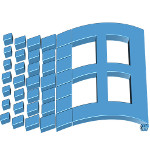By Stephen F. Pinson
Scott & Scott, LLP
In a previous blog, I spoke about what an indemnification provision is and how it operates. In this blog, I will discuss questions that licensors and licensees should ask when negotiating an indemnification provision within a software contract: (1) what are the licensor’s objectives in the indemnification section, (2) what are licensee’s objectives in the indemnification section, (3) what is a checklist of elements and questions that should be negotiated in a indemnification section, and (4) what is a general checklist of provisions that should be included in a indemnification section.
(1) Licensor’s objectives in an indemnification section
The licensor’s (software vendor) objective is to protect itself from any claims resulting from the licensee (business) from breaching the license grant. For example, if the licensee modifies the software contrary to the license grant, then the software vendor may be exposed to third-party claims. The licensor often will seek indemnification from those types of claims through the indemnity clause called “IP Indemnity.”
On the other hand, another objective of the licensor is to indemnify the least amount of loss or liability possible. For some contracts, and indemnification section will not exist for a licensor to indemnify, and for others it will be detailed and extensively negotiated. Usually, a licensor at the very minimum will indemnify for intellectual property infringement for its own liability.
(2) Licensee’s objectives in an indemnification section
Alternatively, the licensee is looking to be protected from third-party lawsuits for intellectual property infringement resulting from a situation where the licensor has intellectual property (typically software code) that infringes on the property of someone else (third-party claimant). In this scenario, the licensee is also infringing on the rights of the third party and can be sued for infringement. For this reason, the licensee would want to seek protections in the indemnification provision.
(3) Checklist of questions that should be asked when negotiating a warranty section on performance warranties:</bold
Consider the following negotiation elements when drafting, negotiating or entering into a contract with an indemnity provision:
1. Applicability – Who is indemnifying whom? Is the indemnification mutual or unilateral?
2. Scope of Indemnity – What is the scope of the indemnification? Will the Indemnitor indemnify/reimburse for losses, defend (a duty to provide a defense), or hold harmless (bar claims against the Indemnitee)?
3.Nature of covered claims – What risks of doing business under the contract are being indemnified, i.e., inter-party claims based on breach of representation, warranty, or other contractual obligation, third party claims based on product liability, infringement, fraud, or negligence, governmental claims based on regulatory matters, or other specified claims such as: personal injury, property damage, economic loss, and attorneys’ fees and costs of defense?
4. Exceptions – Are there any exceptions to indemnification such as taking control of the claim? Or not causing the indemnifying circumstances such as not modifying code?
5. Limitations – Should there be a monetary limit on the extent of the indemnity? If so, the limitation should bear a reasonable commercial relationship to the contract. Is there a limitation as to the time a party can bring an indemnification claims (i.e., within a 6 months, 1 year, etc.)? Is there a limitation on the amount that can be recovered for an indemnified claim in the Limitation of Liability (i.e., preferably a licensee will want an exclusion where the limitation of liability does not apply and damages are uncapped)? Or, does the contract include a provision requiring coverage of certain risks by insurance such that the indemnity is limited to the amount of the insurance coverage (i.e. contractual liability insurance)?
6. Procedure – Does the indemnity provision specific procedural requirements for recovery, like submitting a claim within a certain time period, of follow certain procedures to submit a claim for Indemnitee? Is there a duty to mitigate any portion of the claim before submitting it to the Indemnitor?
7. Exclusivity of remedies – Do the terms of the contract determine whether the Indemnitor is obligated to reimburse the Indemnitee for a particular claim, and if so, when? Does the contract clearly express an intent to indemnify a party against its own negligence, and if so does it make sense under the circumstances?
8. Review other corresponding provisions in the contract – Does the indemnification provision harmonize with the warranty and limitation of liability section in the contract? Does the insurance section of the contract harmonize with the indemnity section? Are there enough insurance limits for this type of claim scenario for the licensor? Is the limitation of liability uncapped for intellectual property claims for the licensee?
(4) Provisions that should be included in a typical Indemnification section:
Licensor Provisions:
Licensor will defend, indemnify and hold harmless licensee for third party intellectual property infringement.
Licensor will pay all costs and damages awarded.
Conditions – Licensor’s obligations for indemnification are conditioned on the following:
(a) Licensee notifying Licensor promptly in writing of such action.
(b) Licensee giving Licensor sole control of the defense or settlement thereof.
(c) Licensee cooperating with Licensor in such defense.
Exclusions – Licensor will have no liability if the following occurs:
(a) any use of the Software not in accordance with the Agreement
(b) any modification of the Software made by any person other than Licensor.
Entire Liability – This is the entire liability of licensor and exclusive remedy.
Licensee Provisions:
Licensor will defend, indemnify and hold harmless licensee for third party intellectual property infringement.
If Licensee’s continued use of the Software is restricted or prohibited as a result of any such infringement, Licensor shall, at Licensee’s option and at no charge to Licensee:
(a) secure for Licensee the right to continue using the Software
(b) modify or replace the infringing components of the Software so that they are non-infringing
(c) refund to Licensee all amounts paid by Licensee for the Software.
Exclusions – Licensor will not be obligated to indemnify Licensee to the extent of the infringement claim based upon:
(a) use of the Software in breach of this Agreement
(b) any modification of the Software made by Licensee (other than at Licensor’s direction)
Defense of Third-Party Suits – Licensee will notify Licensor of third party suits promptly. If licensee tenders claim to Licensor, Licensor will have right and obligation to defend such claim. Once Licensor assumes defense of a Claim, it will be conclusively presumed that Licensor is obligated to indemnify Licensee. No settlement of a Claim will be binding on Licensee without Licensee’s prior written consent
*This is not an exhaustive list of provisions
Remember, an indemnification section is a specialized risk transfer section within a software contract. It is crucial to understand it and to successfully negotiate it to prevent unwanted risk. It is always important to seek advice from experienced legal counsel in order to understand all the risks involved when negotiating these types of provisions in a software contract.
 Regardless of whether the publisher is Microsoft, Adobe, Autodesk, Oracle, IBM or any of their trade groups including the BSA | The Software Alliance, Robert Scott of
Regardless of whether the publisher is Microsoft, Adobe, Autodesk, Oracle, IBM or any of their trade groups including the BSA | The Software Alliance, Robert Scott of  Anyone who has purchased a product online or downloaded software for a computer, tablet or mobile device has likely encountered “browsewrap” and “clickwrap” agreements, write
Anyone who has purchased a product online or downloaded software for a computer, tablet or mobile device has likely encountered “browsewrap” and “clickwrap” agreements, write 
 Google won a jury verdict that ends Oracle’s claim to a $9 billion slice of the search giant’s Android phone business,
Google won a jury verdict that ends Oracle’s claim to a $9 billion slice of the search giant’s Android phone business,  Most software audits pertaining to products licensed under perpetual licenses (such as licenses acquired under a Microsoft Select Agreement, MPSA or (usually) Enterprise Agreement) incorporate a snapshot-in-time approach, where licenses owned generally are compared to deployments identified through data collected about current-state product deployments. In contrast, audits pertaining to products licensed under a Microsoft Services Provider License Agreement (SPLA) incorporate a strong historical-use element. Since SPLA pricing is based on a monthly reporting model, SPLA audits look at historical usage during the period covered by an audit (often, three years or more), and then compare that historical usage to a licensees’ historical usage reports.
Most software audits pertaining to products licensed under perpetual licenses (such as licenses acquired under a Microsoft Select Agreement, MPSA or (usually) Enterprise Agreement) incorporate a snapshot-in-time approach, where licenses owned generally are compared to deployments identified through data collected about current-state product deployments. In contrast, audits pertaining to products licensed under a Microsoft Services Provider License Agreement (SPLA) incorporate a strong historical-use element. Since SPLA pricing is based on a monthly reporting model, SPLA audits look at historical usage during the period covered by an audit (often, three years or more), and then compare that historical usage to a licensees’ historical usage reports. One of the most critical and important contracts a startup can focus on, and do correctly, is to properly license IP from a university so that it can be commercialized going forward, according to a
One of the most critical and important contracts a startup can focus on, and do correctly, is to properly license IP from a university so that it can be commercialized going forward, according to a  Companies that have long relationships with Microsoft know that the company’s form licensing agreements have steadily evolved over time, and typically for the worse. If software licensing can be said to have any “natural laws,” certainly the First Law could be paraphrased to something like: “If you agree to an inch, be prepared to give a mile.” So it is with Microsoft’s standard-form Services Provider License Agreement (SPLA).
Companies that have long relationships with Microsoft know that the company’s form licensing agreements have steadily evolved over time, and typically for the worse. If software licensing can be said to have any “natural laws,” certainly the First Law could be paraphrased to something like: “If you agree to an inch, be prepared to give a mile.” So it is with Microsoft’s standard-form Services Provider License Agreement (SPLA). While everyone knows of the need to comply with contractual terms in software licenses (and elsewhere), the salient point in this context, is that under several recent cases, failure to do so with respect to a license for copyrighted material (which is usually applicable to software), allows the pursuit in federal court for claims for infringement damages under the Copyright Act and related items, such as attorney fees, according to an article from
While everyone knows of the need to comply with contractual terms in software licenses (and elsewhere), the salient point in this context, is that under several recent cases, failure to do so with respect to a license for copyrighted material (which is usually applicable to software), allows the pursuit in federal court for claims for infringement damages under the Copyright Act and related items, such as attorney fees, according to an article from  In a
In a